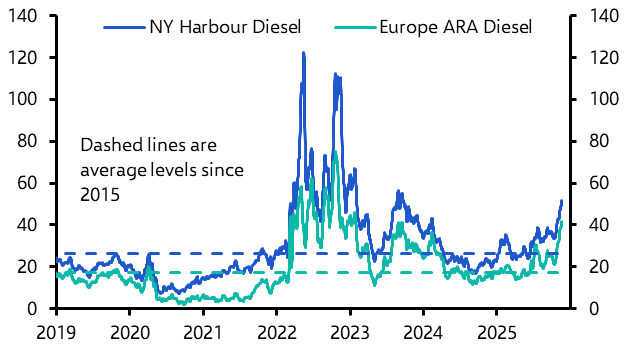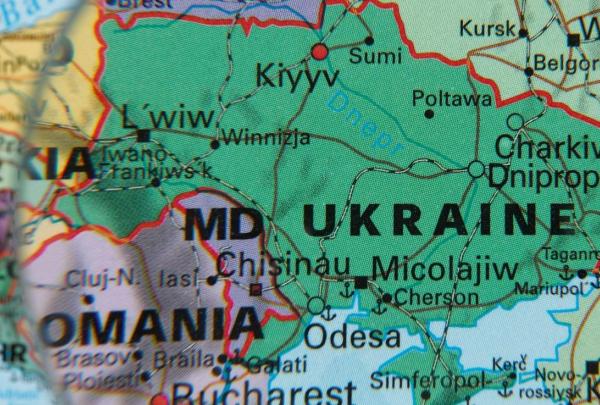In last week’s note I sketched out the costs so far of President Trump’s trade war. In this week’s note I turn my attention to the economic damage it may cause in the future. Three points are worth stressing.
The first is that, while the trade dispute between the US and China will ebb and flow, the trend over the next year or so is likely to be towards further escalation. Admittedly, optimists can point to the recent agreement between the US and Mexico as evidence of Trump’s willingness to do a deal. But the dispute with China is fundamentally different in several respects.
For one thing, from an economic perspective the US is more important to Mexico than it is to China. Exports to the US are equivalent to around 25% of Mexico’s GDP, compared to just 3% in China. Mexico was always likely to try to find common ground with the US. China is under less pressure.
What’s more, the White House faced calls from US producers – particularly auto makers – to back down from its plan to impose tariffs on Mexico since it would have played havoc with the supply chains that criss-cross the US-Mexico border.
Although US multinationals also have supply chains with China, these are on a smaller scale. More fundamentally, the dispute with Beijing has morphed from its original focus on trade imbalances to encompass a much broader set of issues surrounding industrial strategy and technology. Such concerns have a large constituency among US businesses and being seen to tackle them will play well with the public and corporate America as we head towards the 2020 election.
On the other side of the dispute, however, China’s leaders are never going to agree to any deal that requires major, unilateral changes to industrial strategy. The political logic of the trade war therefore points to a steady escalation in the conflict over the coming quarters. Investors should prepare for the long haul.
The second point to note is that, if we’re right, then the costs of the trade war will inevitably build. As I noted last week, we estimate that the trade war has so far shaved around 0.3% off world GDP. That’s significant, but can only explain a small part of the slowdown in global growth over the past 18 months.
Looking ahead, we have now factored a further escalation in the trade war into our baseline forecasts for 2019 and 2020. This assumes that the US introduces a 10% tariff this year on the $300bn of imports from China not already subject to tariffs, and then raises that tariff to 25% next year. Meanwhile, we assume that Beijing retaliates through a combination of tariffs on imports from the US and administrative restrictions on US firms. We also expect the renminbi to fall to as low as 7.5/$ by the end of next year.
Like earlier phases of the trade war, all of this will have both a direct and an indirect effect on output and activity (with the latter coming through things like confidence, financial conditions and business investment and affecting countries outside the US and China).
The net result is that, combined with the measures imposed so far, we think the trade war is likely to cause global GDP to be about 0.5% lower than it would have otherwise been by the end of 2020. That’s fairly modest when you consider that by the end of 2020 we expect world GDP to be over 2.5% lower than would have been the case if the global economy had continued to grow at the rates experienced at the end of 2017. But a further escalation in the trade war is nonetheless another reason to expect next year to be the weakest year for global growth since 2009.
The third and final point to make is that, as things stand, this is only partly priced into financial markets. Admittedly, trade war fears are clearly evident in some parts of the US stock market. For example, the share prices of firms producing automobiles or semiconductors have been hit hard in recent weeks, as they were when the first round of tariffs on China was confirmed a year ago. (See Chart.)
Chart: US Stock Market Performance in Two Stages of Trade War by Industry Group (%)

This suggests that investors think there is a good chance of further (or higher) tariffs to come, which would hit those industries particularly hard. But the lack of reaction elsewhere is arguably an indication that they are not yet very concerned about the prospect of widespread non-tariff retaliation against US firms of the kind we have seen against FedEx recently. Nor do equity investors seem to be concerned about the broader health of the US economy. In our view, this is complacent on both fronts.
So the main message is that the trend in the US-China trade war over the next year is likely to be towards further escalation, the economic damage is likely to build and the implications of this have only been partly priced into financial markets. However, there is a much bigger question lurking in the background, which is whether the trade war simply reflects the fact that the wave of globalisation that spread through the world economy over the past twenty years is at an end. If so, this would have profound implications for economic growth and all manner of asset prices – and it’s a subject to which we will return in future work.
In case you missed it:
(Requires login)
- Our US team argues that interest rate cuts are coming, but the Fed is likely to wait until September to move.
- Our Senior Europe Economist, David Oxley, argues that while the SNB left its policy settings unchanged last week, the next move in interest rates is likely to be down.
- Our Latin America team is becoming even more bearish on the outlook for growth this year.




